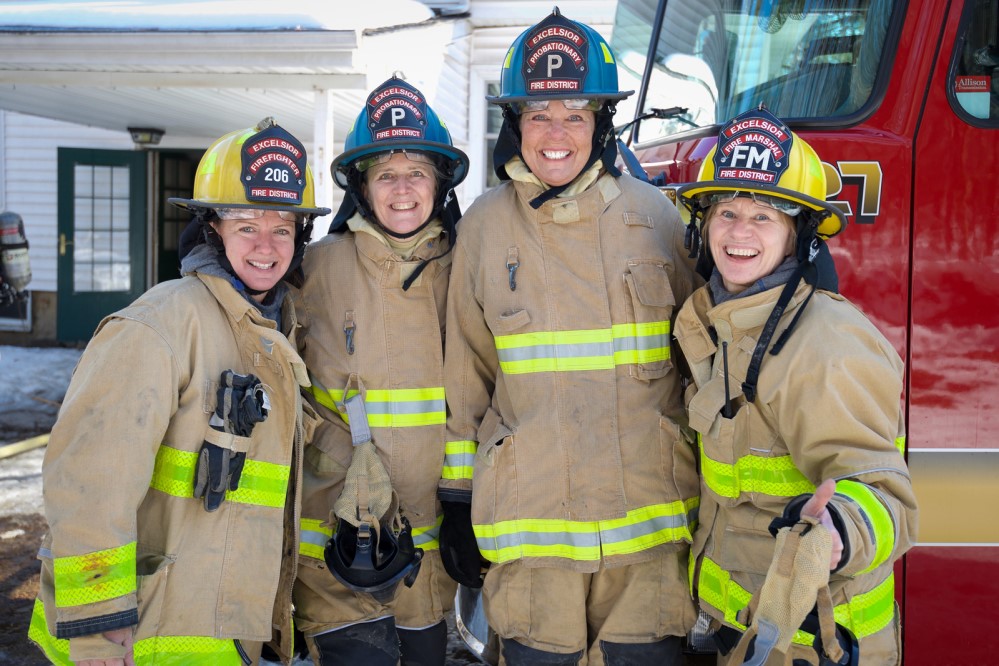
When I received an email from a fire district chief in a neighboring city inviting a number of nearby city administrators and councilmembers to participate in a live burn, I couldn’t answer fast enough. This was an opportunity to take part in real firefighting training in a real burning house. When would I ever have a chance like this again?
It sounds a bit crazy, I know. Why in the world would a city administrator with zero knowledge of firefighting volunteer to put themselves in possible danger? Well, in my case, I’m the daughter and sister of two former firefighters. I grew up in a neighborhood with a half dozen firefighters. It wasn’t uncommon to have friends whose dads were firefighters and for those friends to grow up to be firefighters, too. I was taught to respect these brave men (and there were only male firefighters back then). For me, it was never something I aspired to be because at the time I didn’t think girls could grow up to be firefighters.
Of all the partnering cities invited to the live burn, only Councilmember Lou Dierking of nearby Excelsior stepped up to join me. Of the dozens of firefighters participating in training that day, Lou and I were only two of four females taking part in the live burn. The other two women, Fire Marshal Kellie Murphy-Ringate and firefighter Sandy Dostal, were there to make sure Lou and I knew what to expect and to explain the process as we went along. They were also our safety nets if at any time we felt anxious or unsafe, and wanted to get out of the burning house sooner rather than later. We had a safe word (“dog food”) and an arm signal in case we couldn’t be heard. Fires are loud.
The day before the burn, we were introduced to the self-contained breathing apparatus (SCBA) equipment. If you’re a scuba diver, then you know this is how you breathe underwater. Lou and I had never been scuba diving. The SCBA worn by firefighters is heavy, surprisingly so, and we hadn’t even put on the turn-out gear yet. Then we were fitted for boots, pants, jackets, hoods, helmets, and gloves.
The morning of the burn, we loaded the gear onto one of the fire rigs and went to participate in a briefing much like you’d see on shows like Emergency, Chicago Fire, and the movie Backdraft. But this is the last reference I will make to these Hollywood depictions because they are nothing like the real thing outside of the briefing. Fire District Chief Curt Mackey explained how the training exercise would look to the firefighters and that there would be five different groups of them going in to knock down the fire. After the briefing, we drove to the house in Shorewood where the fire would take place.
According to Shorewood City Administrator Greg Lerud, the old farmhouse came on the market several years ago, and the city had its eye on it for some time for a storm water pond. Shorewood has significant stormwater issues in the western part of the city, and as road improvement projects take place, it’s necessary to add storm water management, but they needed a place to provide rate and volume control. The farmhouse was ideally located, so the city purchased it and offered it to the fire department for training purposes.
Lou and I walked around the house with Murphy-Ringate while she explained that the A painted on the house was for the front, B was the side, C was the back, and D was the other side of the house. She pointed out the exits and their importance during a fire, along with other factors crucial to fighting fires. After this bit of explanation, we got into our approximately 75 pounds of gear. Murphy-Ringate took us into the house to point out where we would be and what we could expect to see. She and Dostal would be behind us through it all.
In the corner of the house’s dining room, there was some hay, wood, and cardboard. While we knelt in the opposite corner, a firefighter starter the fire. Cardboard kept being added to get the fire really going. In the meantime, I watched in awe as the flames got bigger and bigger and traveled up the wall and across the ceiling. Smoke filled the living room next to the dining room. In the house’s entrance, the smoke formed a line dividing the room in half—the upper half thick with smoke and the bottom half with some visibility. Now I know why I was taught to crawl to safety in a fire. I was especially conscious of my breathing during this experience. My brother told me my breathing would increase as I got anxious, but I never felt that way. I was calm. I had the utmost trust in the gear I was wearing and the equipment on my face and back. I also knew Murphy-Ringate and Dostal had my back and I would be ok.
Then it happened, my nose itched. Of all things! Meanwhile, the firefighters came in low and on their knees to knock down the fire with little bursts of water so as not to get too much steam in the room. They do that to avoid a steam burn to their skin through the turn-out gear. Turn-out gear has a vapor barrier. They moved from the dining room to the living room. It was time for Lou and me to exit. Luckily, Dostal helped me get back on my feet. Being down on my knees, with the weight of the equipment, I would have had to crawl out the door without her.
One of the things I noticed about the fire was that there was no black smoke. Murphy-Ringate explained that it was because there was no furniture or carpet in the house, so therefore no petroleum. It was a “clean” burn, meaning only white and gray smoke. Another interesting thing I learned was that in order to get much of the smoke out of the house, firefighters opened the front door and sprayed the hose out the door. The smoke inside the house rushed out the door. Chief Mackey explained that this is a phenomenon called hydraulic ventilation. They use the fluid power from the handling to ventilate the space to remove smoke and heat. It makes the space more tenable and increases the chances of making a rescue during a primary search.
The men and women of the fire department that do this as a part-time job, and hold down “regular” jobs and have families, are simply amazing. They have ongoing training throughout their time with the department, and let me tell you, it’s not easy. They don’t do it for the money either; they do it because they love the work. We all need to be grateful they do.
For Lou and me, our firefighting experience lasted three and a half hours. We didn’t have to worry about clean up or any of the other uncool messy duties after the fire was out. We got to go home and tell our families about the experience. Now I have a greater appreciation for firefighters and the importance of their jobs, bravely risking their lives for their community. And now I get to talk a little shop with my dad and brother.

KATHY LAUR, MPA, is city administrator of Tonka Bay, Minnesota.
New, Reduced Membership Dues
A new, reduced dues rate is available for CAOs/ACAOs, along with additional discounts for those in smaller communities, has been implemented. Learn more and be sure to join or renew today!
